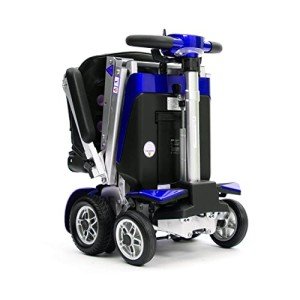Mobility Scooters: A Comprehensive Guide
Mobility scooters have ended up being a necessary mode of transport for numerous people dealing with mobility challenges. This post explores the different elements of mobility scooters, including their types, benefits, features, and a guide for prospective purchasers.
Understanding Mobility Scooters
Mobility scooters are electrically powered gadgets created for individuals with minimal mobility. They provide a method of transport for individuals who might have trouble walking however still wish to keep their independence. They come in various designs and functions to accommodate a large range of requirements.
Types of Mobility Scooters
Mobility scooters can usually be categorized into three main types:
| Type | Description | Best For |
|---|---|---|
| Compact Scooters | These are small and lightweight, ideal for inside your home and short journeys. | Users with minimal storage area or those who travel typically. |
| Mid-size Scooters | A balance between portability and stability, appropriate for both indoor and outside use. | Those who need to cover a range of surfaces. |
| Heavy-duty Scooters | Large and robust, designed for rugged outside usage and heavier people. | Users requiring additional weight capability or going off-road. |
Key Features of Mobility Scooters
The choice of mobility scooter often depends on the features that align with private requirements. Here are a few of the crucial features to think about:
- Weight Capacity: Mobility scooters include various weight limitations. It is essential to select a scooter that can sufficiently support the user's weight.
- Range: The range a scooter can take a trip on a single charge varies. Depending upon user needs, one might choose scooters with a series of approximately 40 miles.
- Speed: Most mobility scooters can reach speeds between 4 to 8 mph. Consider what speed is comfy and safe for the intended environment.
- Turning Radius: A compact turning radius is essential for indoor usage, enabling simpler navigation in tight areas.
- Battery Type: The kind of batteries utilized can affect the scooter's efficiency. Lead-acid and lithium-ion batteries are the most typical.
Benefits of Using Mobility Scooters
The advantages of mobility scooters extend beyond simply transport. Some essential advantages include:
- Independence: Users can navigate their environment without relying on caretakers, promoting independence and self-confidence.
- Health Benefits: Using a scooter can motivate outside activity, resulting in physical and mental health enhancements by reducing sensations of seclusion.
- Convenience: Scooters can quickly be run in different environments, whether inside your home, in shopping malls, or outdoors.
Important Considerations When Buying a Mobility Scooter
When purchasing a mobility scooter, several factors to consider can assist guarantee that you pick the ideal model:
Assess Individual Needs:
- Mobility level: Consider how much support the person will require.
- Series of use: Determine where the scooter will mainly be utilized (inside, outdoors, on rough surfaces, etc).
Test Drive:
- Always test drive several models to find an ideal fit. Focus on comfort, ease of steering, and the scooter's responsiveness.
Evaluation Safety Features:
- Look for scooters with appropriate security features like lights, indications, and anti-tip styles.
Check Warranty and Service Options:
- A trusted service warranty and available service choices are important for long-term use.
Frequently Asked Questions about Mobility Scooters
1. How quickly do mobility scooters go?Mobility scooters generally have speeds ranging from 4 to 8 miles per hour, with a lot of created for safety instead of high-speed travel. 2. Are there weight constraints on mobility scooters?Yes, mobility
scooters come with specific weight limits, frequently varying from
250 pounds to over 500 lbs, depending on the design. 3. My Mobility Scooters be used indoors?Certain models, especially compact scooters, are particularly created for
indoor usage and are much easier to navigate in tight areas. 4. How often do the batteries need to be replaced?Battery life can differ based on usage, but typically, with appropriate care, batteries might last in between 1 to 3 years before needing replacement
. 5. Are mobility scooters covered by insurance?Coverage can differ, however some insurance coverage plans, including Medicare and Medicaid, might cover part of the cost. It's recommended to check with individual insurance coverage suppliers. Mobility scooters act as a
valuable tool for lots of people, allowing them to keep
their liberty and self-reliance. By understanding the various types and features of mobility scooters, people can make informed decisions tailored to their specific needs.
Whether used for errands, socializing, or leisurely activities, mobility scooters can boost the quality of life for those with mobility restrictions. Buying a mobility scooter is a decision that can considerably affect an individual's life. For that reason, individuals should thoroughly examine their options and choose a design that best aligns with their lifestyle and mobility requirements
.

